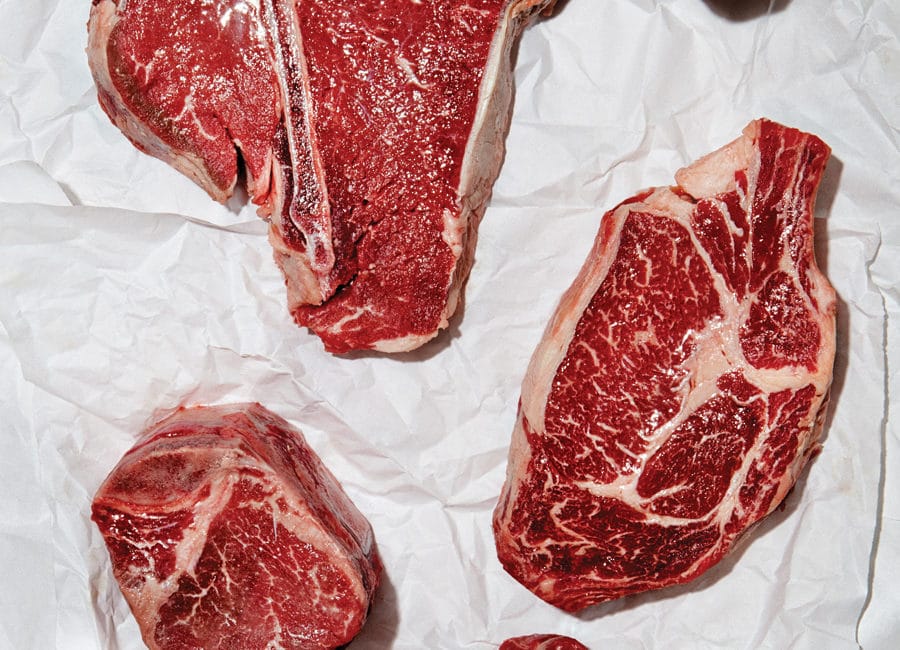
Making the Cut: Know Your Luxury Steaks
Though all the luxury steaks in this all-star lineup come from the same lightly worked muscle group on a cow’s back, the way they are cut says everything about how they turn up on your plate. Here are some delectable essentials for helping you get the most flavor for your steakhouse dollar.
Filet
Easily overcooked, this lean yet rich cut taken from the tapered end of the tenderloin is the true test of a steakhouse’s ability to cook to the customer’s temperature preference. Translated as “cute filet” or “dainty filet,” the phrase “filet mignon” is often attributed to the American short-story writer O. Henry, who first used it in his 1906 book, The Four Million.
Bone-in filet
This once-rare cut is showing up on menus as diners have discovered the succulence and slight sweetness a bone can impart. The bone also insulates the filet, making it harder to overcook.
Porterhouse
A cousin to the somewhat humbler T-bone, this hefty cut from the short loin marries both a generous strip steak and a USDA-minimum 1.25 inch–thick portion of prized tenderloin for a consummate beef-eating experience. It’s a perfect choice for splitting or taking home for leftovers—with a generous bone for the dog. Many mainstream restaurants now offer a super-tender and mild veal porterhouse, or even one cut from pork.
New York strip
The popular cut from the short loin is typically less tender than the ribeye or tenderloin but still packs plenty of beefy flavor. Its lack of large pockets of fat makes it easy to trim and get on the grill. Some steakhouses call this same cut a Kansas City strip or a strip loin.
Ribeye
Though often termed a “cowboy” or “tomahawk” ribeye when served on the bone, this favorite of butchers and true steak aficionados is typically served with the bone removed. As butcher Joseph Dugdale of L.E. Kincaid & Sons Meat Market explains, “A ribeye’s fat content is a lot closer to a chuck roast than any other steakhouse cut. That means you can cook it medium-well and still get a juicy, flavorful steak. You can even braise it like a pot roast.” A boneless ribeye is sometimes termed a “Delmonico steak.”
We love steak, any way you slice it. In Indianapolis, there’s a steakhouse to cater to every occasion and level of sophistication, and after months of dining like wealthy cavemen, we present them to you here, in juicy detail. A la cartes include a primer on the king cuts (for those who don’t know a porterhouse from a portobello), tips on the best cheap chops in town, a cattle call of beefy terms, and a stab at defining that common condition among steak-lovers—the meat sweats. You want a piece of this? Dig in.





